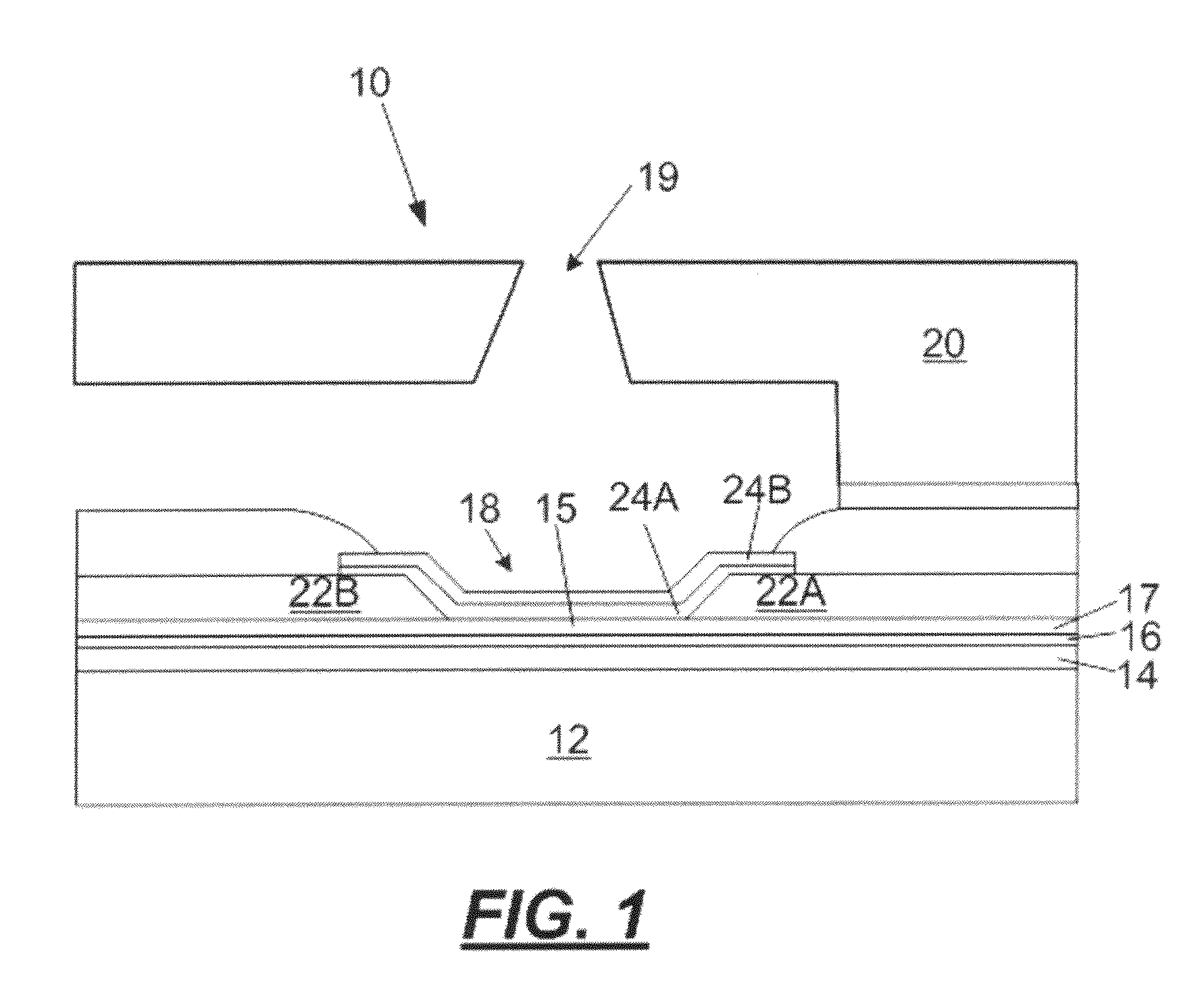Micro-Fluid Ejection Heads with Multiple Glass Layers
a technology of microfluid ejection and glass layer, which is applied in the direction of printing, inking apparatus, etc., can solve the problems of insufficient use efficiency of circular wafer stock, inability to achieve microfluid ejection heads, and prohibitively expensive cost per chip, etc., and achieve thermal conductivity and smoothness properties suitable
- Summary
- Abstract
- Description
- Claims
- Application Information
AI Technical Summary
Benefits of technology
Problems solved by technology
Method used
Image
Examples
Embodiment Construction
[0016]As described in more detail below, the exemplary embodiments disclosed herein relate to non-conventional substrates for providing micro-fluid ejection heads. Such non-conventional substrates, unlike conventional silicon substrates, may be provided in large format shapes to provide large arrays of fluid ejection actuators on a single substrate. Such large format shapes are particularly suited to providing page wide printers and other large format fluid ejection devices.
[0017]With reference to FIG. 1, there is shown a plan view of a portion of a micro-fluid ejection head 10, such as an inkjet printhead, having a non-conventional substrate 12 processed to include a first glass layer 14 and a second glass layer 16 according to the disclosure. Such a structure may be used to effectively dissipate heat and provide desirable bubble nucleation characteristics.
[0018]In a manner well known in the art, thermal fluid ejection actuators 15, such as heater resistors are formed from a heater...
PUM
| Property | Measurement | Unit |
|---|---|---|
| thickness | aaaaa | aaaaa |
| thickness | aaaaa | aaaaa |
| length | aaaaa | aaaaa |
Abstract
Description
Claims
Application Information
 Login to View More
Login to View More - R&D
- Intellectual Property
- Life Sciences
- Materials
- Tech Scout
- Unparalleled Data Quality
- Higher Quality Content
- 60% Fewer Hallucinations
Browse by: Latest US Patents, China's latest patents, Technical Efficacy Thesaurus, Application Domain, Technology Topic, Popular Technical Reports.
© 2025 PatSnap. All rights reserved.Legal|Privacy policy|Modern Slavery Act Transparency Statement|Sitemap|About US| Contact US: help@patsnap.com



